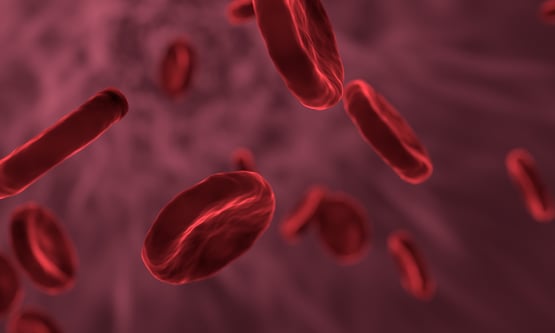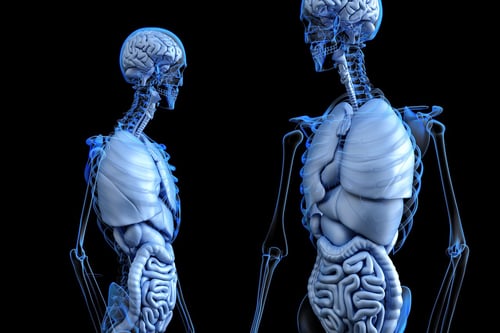according to the graph what condition is best for enzyme activity
Cells are the building blocks of life. All living things take cells - from modest, unmarried-celled organisms like bacteria to large, multicellular organisms like humans. Cells take specific functions that help continue these varied creatures alive and boot. In order to brand these functions happen, chemical reactions occur within cells. Oftentimes, these chemical reactions are sped upwards past a special kind of protein chosen an enzyme. In this article, we're going to answer a few questions: what are enzymes, what are enzymes fabricated of, and what types of enzymes exist. Enzymes are a special kind of protein that are establish in the cells of living organisms. Enzymes are made up of long chains of amino acids that are held together by peptide bonds. Enzymes help with processes like digestion, blood clotting, and hormone production. They basically either catalyze (cause) or speed upwards chemic reactions that take place in the bodies of living things. Typically, enzymes are only responsible for i kind of chemical reaction. And so, an enzyme that helps with digestion won't besides assistance with blood clotting. We need enzymes because they assist usa initiate chemical reactions. For every chemic reaction, a specific amount of free energy needs to be applied to the reactants before the reaction tin can happen. Enzymes help make reactions happen. Information technology's kind of like they are the final button over the hill before you can get a ball to roll down it. Equally I mentioned in the previous department, enzymes are made up of long chains of amino acids. Some enzymes are only made upwards of one concatenation of amino acids, while others are made up of many chains of amino acids. Each enzyme is made up of a unique chain of amino acids (e.g., no 2 different types of enzymes take the same amino acid structure) and each enzyme as well has its own unique shape. In that location are six main types of enzymes that occur in chemical science. These types of enzymes assistance speed up oxidation and reduction reactions. Basically, they assistance motion oxygen and hydrogen atoms from one place to some other. These types of enzymes assistance groups of atoms transfer from molecule to molecule more quickly. These types of enzymes use water to break up single bonds between molecules. Many digestive enzymes are hydrolases and do things like interruption peptide bonds in proteins. Lyases are like to hydrolases - they pause upwards or form molecular bonds. Unlike hydrolases, they don't use h2o as role of their reaction. These types of enzymes speed up isomerization reactions. They rearrange the atoms of a reactant to form an isomer (a molecule with the same chemic formula, but dissimilar arrange of atoms than the original reactant). Ligases enhance the rate of joining of 2 molecules by using the energy obtained from the breakdown of ATP. There are different types of enzymes in the body that can broadly be classified into metabolic, digestive, and food enzymes. Metabolic enzymes are responsible for reactions related to detoxification and free energy production. Many of these enzymes occur in the liver, gallbladder, and pancreas. Metabolic enzymes help us utilize what nosotros become from nutrient (east.g., poly peptide, fatty, and carbohydrates) to make sure that our cells are working, clean, and healthy. Digestive enzymes help break down the foods we consume and catechumen them into energy. An example of these types of enzymes is the enzyme amylase, which breaks down starch into simple sugars.The iii most important digestive enzymes are protease, amylase, and lipase, which digest poly peptide, carbohydrate, and fat, respectively. Food enzymes aren't naturally present in the torso - nosotros go them from the food nosotros eat or from supplements. An example of a food enzyme is cellulase - we use cellulase to assimilate fibers, merely it'southward non produced in the body. We accept to get it from the foods we eat. Food enzymes help digestive enzymes do their job and break down what we consume. Here are a few more types of enzymes present in our trunk and what they do. Enzymes are an important kind of protein that help u.s. practice many things, including: Enzymes are fabricated of chains of proteins called amino acids. Some of them are naturally occurring in the human body and others we need to swallow through food. Writing a research paper for schoolhouse only non certain what to write about? Our guide to inquiry paper topics has over 100 topics in ten categories so you can be sure to find the perfect topic for you. Want to know the fastest and easiest ways to catechumen betwixt Fahrenheit and Celsius? Nosotros've got yous covered! Check out our guide to the best means to catechumen Celsius to Fahrenheit (or vice versa). Are y'all studying clouds in your science class? Get help identifying the unlike types of clouds with our practiced guide.
What Are Enzymes?
What Are Enzymes Made Of?

The 6 Types of Enzymes
Oxioreductases
Transferases
Hydrolases
Lyases
Isomerases
Ligases

How Different Types of Enzymes Work in the Trunk
Enzyme Definition: Key Takeaways
What'southward Next?

About the Writer
Hayley Milliman is a former teacher turned writer who blogs nearly teaching, history, and technology. When she was a instructor, Hayley's students regularly scored in the 99th percentile thanks to her passion for making topics digestible and accessible. In addition to her work for PrepScholar, Hayley is the writer of Museum Hack's Guide to History'due south Fiercest Females.
Source: https://blog.prepscholar.com/what-are-enzymes-definition-types
Post a Comment for "according to the graph what condition is best for enzyme activity"